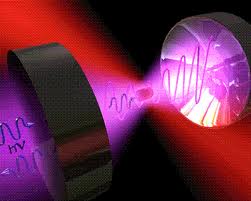

Schrödinger’s cat is by far the best known example of demonstrating quantum superpositions. Now, scientists might be able to observe the cat without risking killing it.
First, lets quickly recap Schrodinger’s cat. To quote from the NewScientist picture, “Erwin Schrödinger proposed that a cat in a closed, booby-trapped box with a random quantum trigger could be simultaneously dead and alive.” From here, the only way to know whether the cat is dead or alive is to open the box and look. By opening the box, you risk killing the cat. So, back to the headline, scientists have proposed that we can ‘look inside the box’ without the risk of killing our feline companion.

PETA 1 – Schrödinger 0
Back to the real world, the ability to observe and control this delicate quantum state without also destroying it could be a major leap forward for quantum computing and other quantum fields. In the classical physics that describe the ‘real world,’ an object can’t simultaneously exist in mutually exclusive states – which is what quantum superpositions require. In other words, classically speaking, the cat can’t be both alive and dead, it must be one or the other because the states are mutually exclusive. Superpositions are very delicate and are easily disturbed, even by simple observations the superposition loses its coherence and the system collapses into just one of the possible states.
Naturally, in regards to quantum computing, the larger the system in a superposition, the harder it is to keep it there. To date, the largest system scientists have put into a superposition was a 40-micrometer strip of piezoelectric material. Physicists were able to manipulate the system, but when they tried to observe it, the system lost its superposition.

Building off of their work, a new team of physicists have proposed a method of observing and manipulating a system of approximately the same size without having it lose superposition cohesion. To do this, the team must put the wire into a superposition, which is accomplished by vibrating it in equal amounts in opposite directions (similar to plucking a guitar string in two opposing directions at once – except with more quantum awesomeness). After the system is in a superposition, the team will send an electric charge through it generating an electromagnetic field. That field can be read my a sensor outside the box.
Now, we aren’t violating all of the laws of quantum mechanics here. The sensor will be unable to determine the direction of the charge and thus unable to determine where the wire is. The sensor will be able to detect how far away the wire is from a natural position though, allowing scientists to catch a glimpse of the system inside the box – all while keeping the cat both alive and dead.
Unfortunately, this experiment is still a few years away. The team needs a sensor that can make very precise measurements on a very tiny scale while being resilient to background interference.